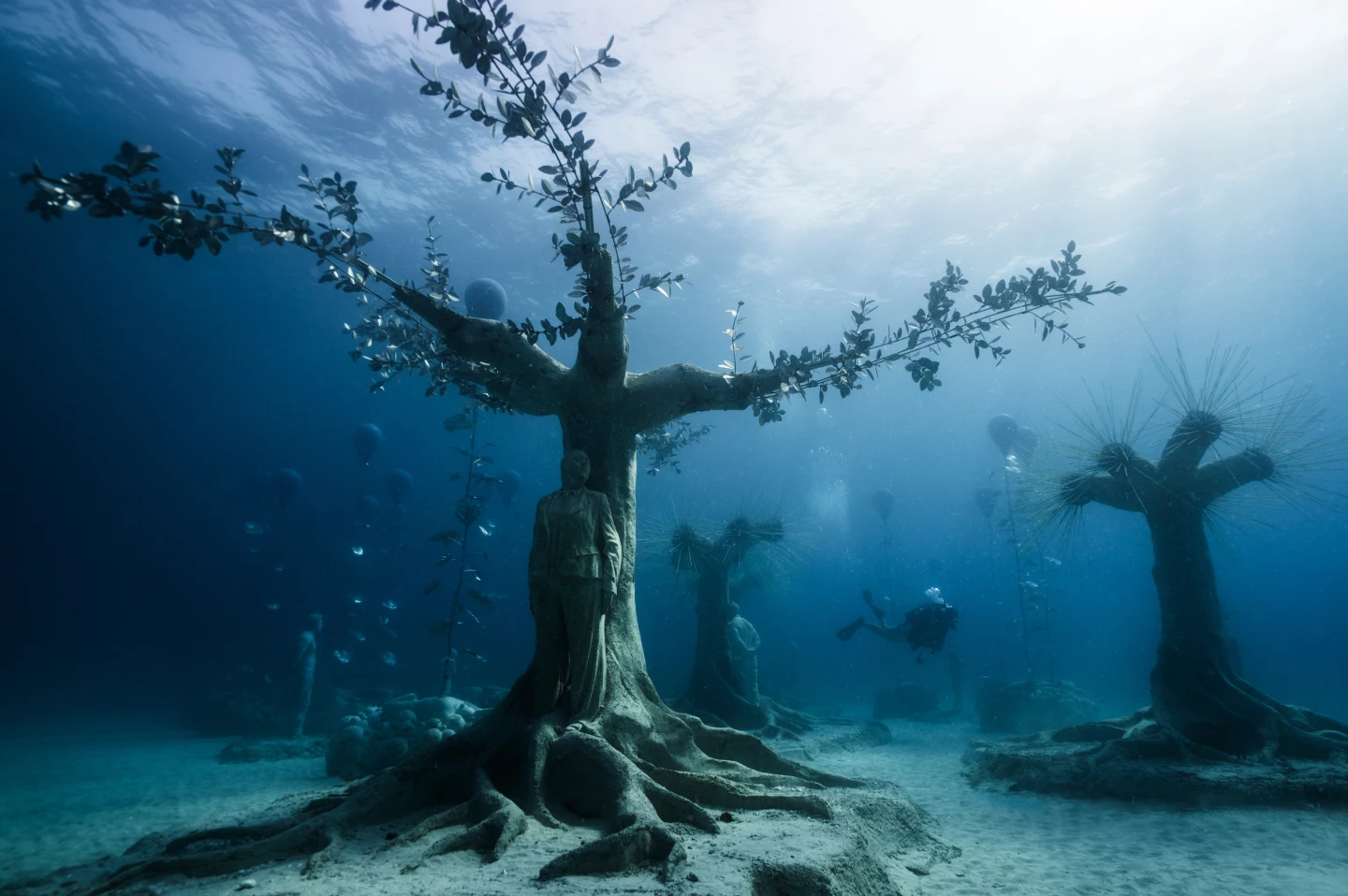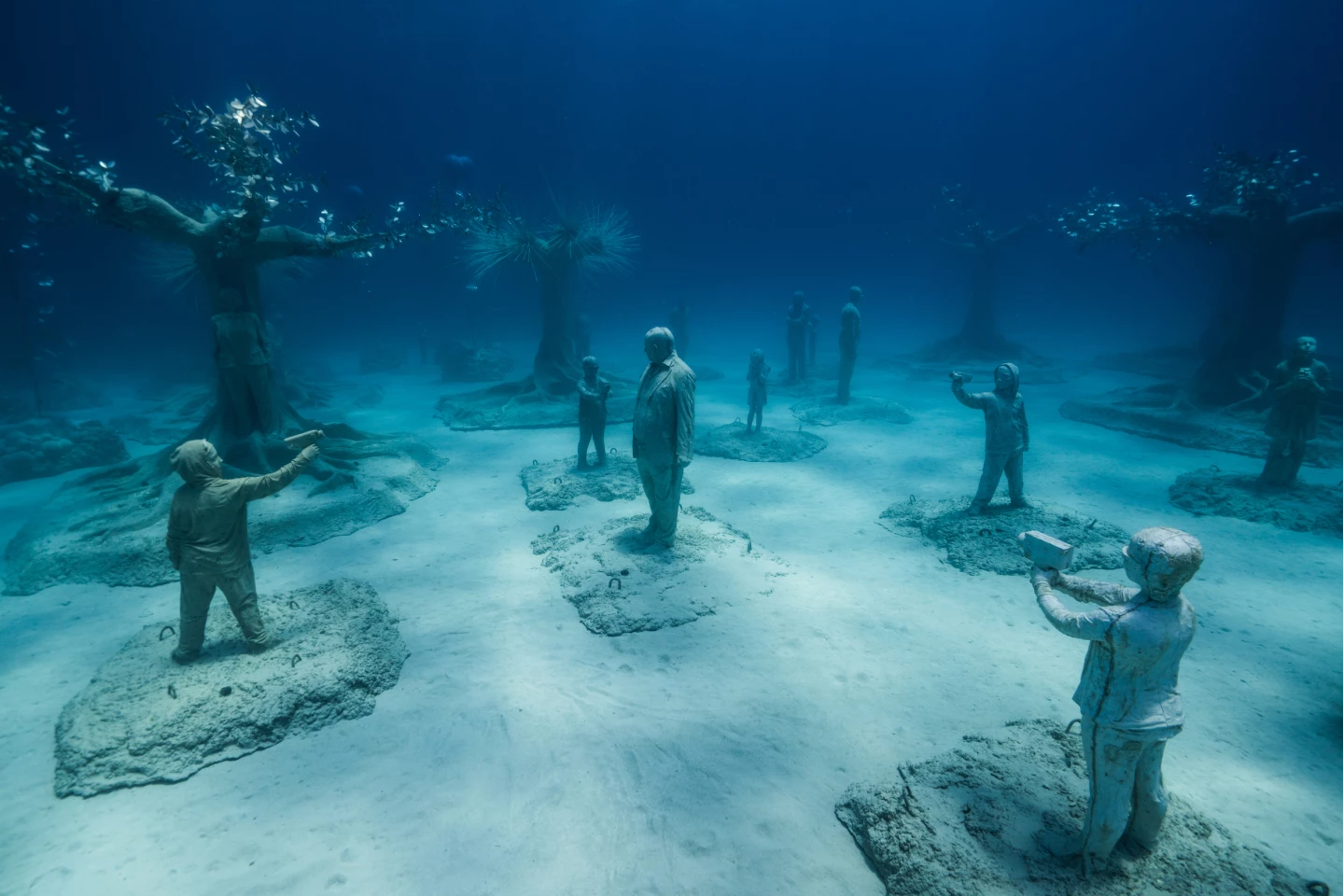You can't help but wonder what archaeologists will make of Jason deCaires Taylor's work generations from now. If his creation of strange sunken heads in France has given them something to think about, then the British artist's latest project, which involves the installation of an underwater forest sculpture that he refers to as "the first of its kind in the world," is no less mysterious and thought-provoking.
The Museum of Underwater Sculpture Ayia Napa (MUSAN) was commissioned by the Municipality of Ayia Napa in Cyprus and the Department of Fisheries and Marine Research for a budget of €1 million (roughly US$1.18 million).

Bringing to mind the natural underwater forest discovered off the English coast several years ago, MUSAN is situated in the clear Mediterranean waters off the coast of Ayia Napa and consists of a total of 93 artworks which have been installed on the sea floor at depths of up to 10 m (32 ft). The sculptures still look quite fresh and new in the gallery images, but the idea is that they will naturally weather over time, and slowly become covered in marine life. Many of them depict relatively straightforward trees, though some venture into the surreal, including children somewhat menacingly pointing video cameras at an adult.
"The artworks, in particular those which represent trees, are designed to attract marine life on a large scale and as such will develop organically," explains the artist. "These installations are placed at various depths from the sea floor to its surface and laid out to resemble a path through a dense underwater forest. Some of the tree forms will float just beneath the surface so that the whole structure provides a complex environment for marine life at all levels of the water column.
"Among the sculpted trees children can be seen playing. They remind us of our need for the natural world as a place to explore, discover and fire our imaginations. Over the last 50 years children have become more excluded from the wild places that once existed. The forest children, camera in hand as they play hide-and-seek in the woods, point their lenses at the human race. They hope for a future in which the mystery and magic of nature will return. The need to re-wild our oceans is as pressing as the need to re-establish our connection to the natural world."

To realize the project, the sculptures were first painstakingly created in a workshop on dry land before being transferred to boats (they appear to be at least part concrete and are described as "inert materials with neutral ph" by the artist). They were then sailed to the location and craned into place on the sea floor with the help of a team of divers following a floorplan to ensure they were positioned correctly.
MUSAN has now been officially inaugurated and is open to scuba divers, free divers, and snorkelers – so if you're in the area, bring some goggles.
Source: Jason deCaires Taylor












